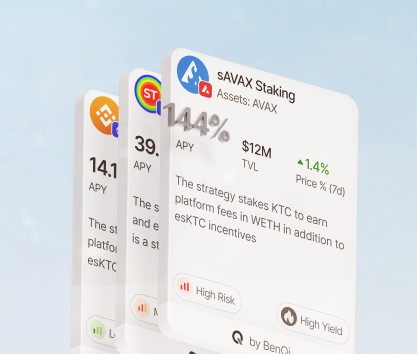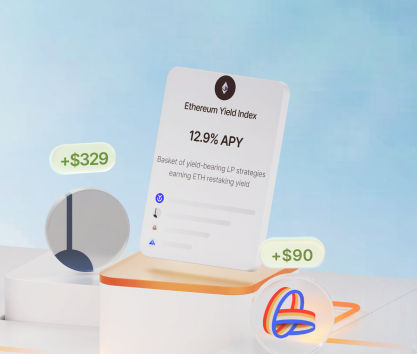Choosing the right set of tools to manage your crypto holdings is hugely important for all DeFi investors. A typical portfolio of an avid DeFi user may contain hundreds of different digital assets, positions, stakes, and more. Understanding how to navigate this complexity and achieve consistent results is crucial for the long-term success of your investment activities.
The current landscape of the DeFi sector does not afford any relaxation to investors. A relatively recent category of liquid staking protocols that allow users to receive staked versions of their tokens and keep holdings usable has over 200 platforms with a combined TVL of over $59 billion. In total, there are over 5,000 tracked decentralized finance applications and thousands of various tools to interact with popular protocols.
Such diversity allows users to apply their creativity to the investment process and build unique portfolios. However, managing hundreds of positions on multiple protocols can be a tedious and difficult task even for seasoned veterans.
We can split all available instruments into several categories. Here are the types of portfolio management tools you can use in the DeFi ecosystem:
- Wallets are incredibly important. A crypto wallet is not just an app to store and occasionally check your holdings. It is used for a variety of purposes including swapping, trading, moving, and otherwise interacting with assets. For instance, Rivo Wallet provides analytical insights, investment suggestions, and more. Contemporary digital wallet technologies allow developers to create excellent features for token management.
- Portfolio trackers come in all shapes and colors. While many investors think that there is not much to innovate and implement, the reality is that you can find novel approaches to managing assets. For instance, DeBank focuses on social components and allows users to track what other community members say about the DeFi ecosystem. This dapp supports 17 chains and has over 340K users.
- DeFi trackers are useful data aggregators that collect on-chain information and supply it in an easily readable format. You can use all sorts of on-chain data trackers to analyze decentralized finance assets and investment opportunities. Good examples of such platforms are DeFiLlama, De.Fi, Coingecko, and many others. Real-time analytics play an essential role in the success of any strategy.
- Multi-protocol investment platforms. These are often great for tracking specific types of positions and investments across the ecosystem. MetaLend is a highly specialized application that focuses on lending and borrowing within the DeFi sector and allows you to interact with a variety of digital tokens while keeping track of various positions and loans. You can track 30 wallets, assets on 8 chains, and over 1000 tokens.
A combination of these instruments creates a solid suite for any DeFi investor interested in having the full picture of their holdings and managing their portfolio as efficiently as possible. Note that you should focus on instruments that are designed to work well across a large number of ecosystems. Cross-platform integration is essential due to the sheer number of different investment opportunities in the decentralized finance sector.
It is also a good idea to work with services that provide financial advice. According to the industry survey, over 65% of all crypto investors use advisory services and over 96% of all surveyed financial advisors have recently received inquiries about cryptocurrencies or DeFi investments. Platforms like Rivo provide novel investment solutions and offer unique insights generated by industry-leading experts. Using such services is also quite useful.
The best instruments for blockchain asset tracking
With the rich selection of available tools, it can be hard to pick something that works well for your portfolio. However, some trackers have strong community support and are popular. We will talk about some useful and reliable tools that you can use to manage all sorts of digital assets and investments.
Here are these tools in no particular order:
- DeBank is often cited as the best portfolio tracker out there. The platform combines the benefits of a social network based on Web3 concepts and provides a detailed breakdown of holdings across 17 chains. One of the best features here is the ability to check what industry experts think about various investment opportunities and how they form their portfolios. Opinion leaders on the platform act like beacons for many newcomers who struggle to find good targets for capital allocation.
- Zerion can be a great solution if you are looking for great wallets capable of efficient token performance monitoring. The app is directly integrated with MetaMask, WalletConnect, and Ledger. You can track a variety of assets in real time. With over 500 integrated protocols and 13 supported chains, it is a solid choice for many users interested in exploring the DeFi ecosystem proactively and managing a diversified portfolio.
- DeFi Saver is a great tool that allows users to automate many investment activities and track positions across 18 supported networks and CEXes. The platform has a massive $7.5 billion trading volume and over 1 thousand fully automated positions under management. The app tracks lending and borrowing, interacts with some of the biggest DEXes, and allows users to create macros for transaction sequencing.
- Rivo is an interesting choice for DeFi investors interested in portfolio diversification strategies. The platform supports 5 chains including Ethereum, BSC, Avalanche, Base, and Arbitrum. The wallet provides a comprehensive breakdown of your holdings while various investment strategies that you can start using with a couple of clicks are updated regularly allowing you to create a balanced portfolio. As of the time of writing, you can focus on distinctly different investment opportunities with varying levels of risk.
The latter option is good for people who want to have positions that pay different risk premiums. For instance, investing in the VIRTUAL-cbBTC pool on Aerodrome through Rivo yields 60.2% but the risk is quite high. On the other hand, you can use Pendle pools like the Syrup USDC Fixed Yield option with a 19.6% APY and a very low level of risk. If you need some reliable risk assessment tools, it is a good idea to work with this platform.
Note that we encourage our readers to do their own research and avoid following any advice blindly. We suggest these platforms as examples of reliable tools that can be used effectively in most cases. However, you should seek options that work for your particular case.
Crypto investment management in 2025
The variety of capital allocation methods in the DeFi ecosystem is simply staggering. Various pools alone form a massive selection pool with over 11 thousand entries. Now, add staking, CDPs, RWA, and other possible market positions on top and you have an ocean of opportunities where newcomers come to drown.
You need these efficient portfolio trackers, data aggregators, and advisory services to navigate your way through the world of DeFi and make informed investment decisions.









